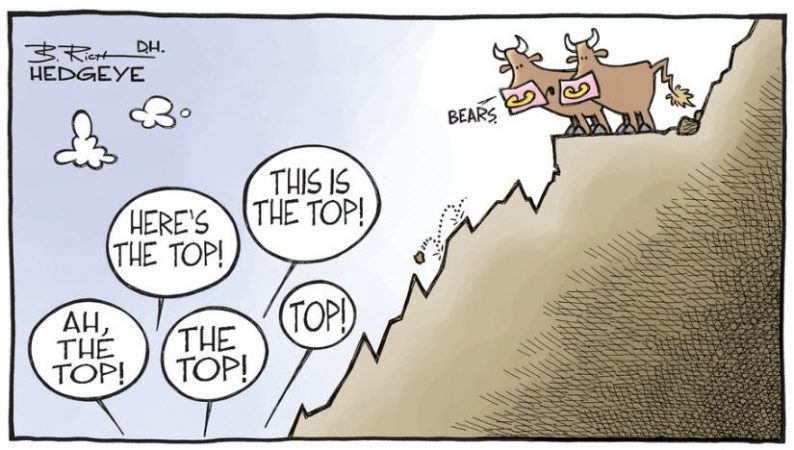Unprecedented Extremes in Overbought Readings
Readers may recall our recent articles on the blow-off move in the stock market, entitled Punch-Drunk Investors and Extinct Bears (see Part 1 & Part 2 for the details). Bears remained firmly extinct as of last week – in fact, some of the sentiment indicators we are keeping tabs on have become even more stretched, as incredible as that may sound. For instance, assets in bullish Rydex funds exceeded bear assets by a factor of more than 37 at one point last week.

Bullish investors had every reason to feel smug in recent months. And while there are a number of bears of varying degrees of prominence who have become cautious much too early (many of whom have fallen silent over the past year or so, but that is how it always works…), there are very few traders who are actively betting on a downturn. And yet, we know that the main bubble fuel – namely, broad true money supply growth – is faltering.
Last Friday, after discussing with friends of ours what the best way to play tail risk currently probably is, we updated a few of the charts we showed in those articles. More on the former topic follows further below, but first here are a few charts we made on Friday, just before the recent minor dip began – i.e., the charts are not showing this dip yet, but this is actually not relevant for our purpose. The first chart is a weekly chart of the DJIA as of Friday last week (we are focusing on the DJIA because it is the “bubble leader”).

A weekly chart of the DJIA as of Friday last week. To be perfectly honest, we are actually not 100% sure if a weekly RSI exceeding 92 is entirely “unprecedented”, although we strongly suspect it is. What we do know for certain is that it has not happened in at least 45 years. As noted in the insert, this manic RSI reading has coincided with DSI readings (daily sentiment index of futures traders) on stock index futures that were the exact opposite of the extreme DSI readings recorded at the low in March of 2009.
When it comes to charts, we like to keep things simple – cluttering them up with all kinds of oscillators and overlays is not really our thing. We do however traditionally use RSI and MACD as overbought/oversold indicators, mainly in order to spot divergences, which are often helpful for short to medium term timing. When we looked at longer-term charts to see whether the DJIA had ever posted a weekly RSI above 92 before, it occurred to us that this was probably extremely rare for any stock market index.












Leave A Comment